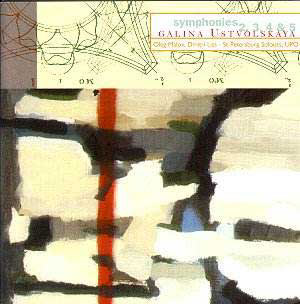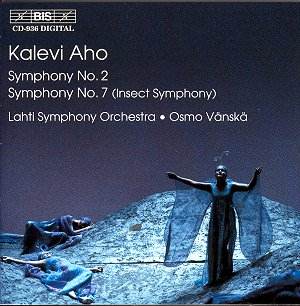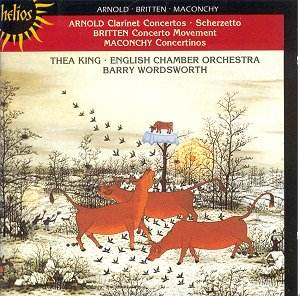 Composer: Galina Ustvolskaya
Composer: Galina Ustvolskaya
Works: Symphony No.2 “True and Eternal Bliss”, Symphony No.3 “Jesus Messiah, Save Us”, Symphony No.4 “Prayer”, Symphony No.5 “Amen”
Performers: Oleg Malov (piano), Pavel Nemytov (voice), Elena Popova (contralto), Ural Philharmonic Orchestra, Dmitri Liss, St Petersburg Soloists
Recording: Yekaterinenburg Philharmonia, August and September 1999; St Petersburg Radio House, October and November 1994
Label: MEGADISC MDC 7854
Galina Ustvolskaya, a prominent figure in 20th-century Russian music, is often overshadowed by her contemporaries. Her compositional style, marked by stark minimalism and a profound sense of existential dread, finds its voice in the symphonic works presented in this recording. These pieces, composed between 1979 and 1990, reflect a unique intersection of personal and collective despair, challenging the listener to confront their own perceptions of faith and suffering. Notably, Ustvolskaya’s symphonies bear religious subtitles, yet the music transcends conventional religious interpretation, often bordering on the ritualistic in its relentless repetition and austere orchestration.
The performance is characterized by a meticulous attention to the unusual orchestral layout that Ustvolskaya employs. Particularly striking is Symphony No.2, which employs an extensive woodwind section and a minimal vocal contribution, where the words “Lord,” “Eternity,” and “Truth” are rendered in a bland recitative that belies the weight of the orchestral fabric. Oleg Malov’s piano contributions are effectively integrated into the dense orchestral textures, providing a grounding element amidst the swirling complexity of sound. The Ural Philharmonic Orchestra, under Dmitri Liss, demonstrates a commendable grasp of Ustvolskaya’s stylistic demands, executing the fortissimo blocks of sound with precision while maintaining the necessary emotional intensity.
The recording quality is commendable, capturing the stark contrasts of dynamics that are a hallmark of Ustvolskaya’s style. The engineering allows for the pronounced crescendos to emerge with clarity, while the abrupt cuts in dynamics create an unsettling experience, reflecting the bleakness inherent in the music. Symphony No.4, with its pared-down forces, is particularly effective in this regard; the ominous wooden cube struck by percussion evokes a sense of ritualistic foreboding, complemented by Elena Popova’s contralto, who delivers the declaimed text with a haunting immediacy. The overall soundscape is meticulously balanced, allowing the listener to appreciate the intricate interplay between the voice and the sparse orchestration.
Comparatively, this recording stands out among other interpretations of Ustvolskaya’s works, such as those conducted by Gennady Rozhdestvensky, which often emphasize a broader emotional palette. This version leans into the despair and ritualism of the music, aligning closely with the composer’s intent to convey a sense of existential torment. The notes by Frans Lemaire provide an insightful commentary, framing the works within Ustvolskaya’s broader artistic vision and emphasizing their ritualistic nature.
Ustvolskaya’s symphonies, particularly in this recording, encapsulate a profound and unsettling exploration of faith and despair. The performances are not only technically proficient but also deeply committed to conveying the stark emotional landscape that defines her music. The recording serves as a testament to Ustvolskaya’s unique voice, one that challenges listeners to engage with the darker aspects of the human experience through a lens that is both personal and universal. This collection is an essential contribution to the understanding of her oeuvre and a compelling invitation to explore the depths of her musical and philosophical inquiries.



